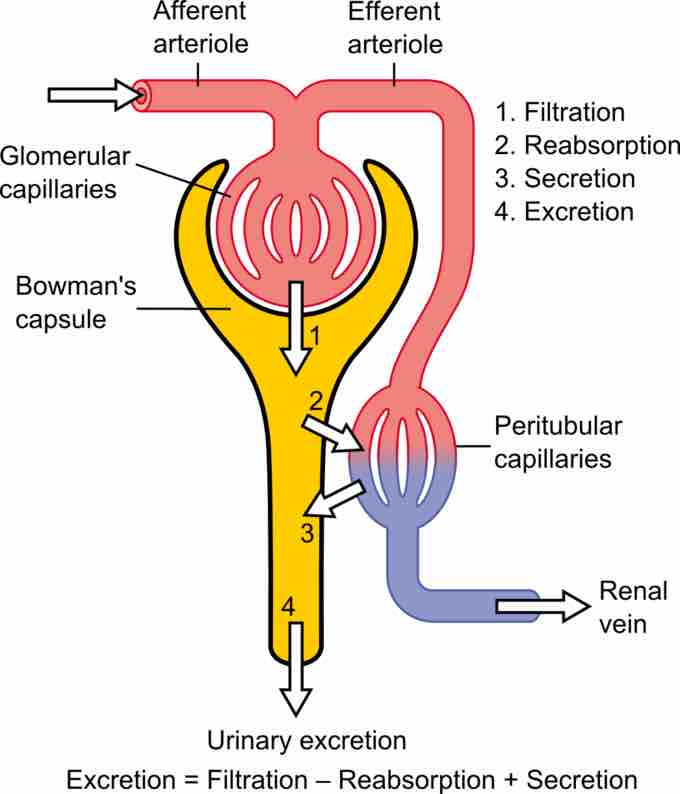Tubular secretion is the transfer of materials from peritubular capillaries to the renal tubular lumen; it is the opposite process of reabsorption. This secretion is caused mainly by active transport and passive diffusion.
Usually only a few substances are secreted, and are typically waste products. Urine is the substance leftover in the collecting duct following reabsorption and secretion.
Mechanisms of Secretion
The mechanisms by which secretion occurs are similar to those of reabsorption, however these processes occur in the opposite direction.
- Passive diffusion—the movement of molecules from the peritubular capillaries to the intersitial fluid within the nephron.
- Active transport—the movement of molecules via ATPase pumps that transport the substance through the renal epithelial cell into the lumen of the nephron.
Renal secretion is different from reabsorption because it deals with filtering and cleaning substances from the blood, rather than retaining them. The substances that are secreted into the tubular fluid for removal from the body include:
- Potassium ions (K+)
- Hydrogen ions (H+)
- Ammonium ions (NH4+)
- Creatinine
- Urea
- Some hormones
- Some drugs (e.g., penicillin)
Many pharmaceutical drugs are protein-bound molecules thatDiagram showing the basic physiologic mechanisms of the kidney and the three steps involved in urine formation. amely filtration, reabsorption, secretion, and excretion. are easily secreted, which is why urine testing can detect the exposure to many types of drugs. Tubular secretion occurs throughout the different parts of the nephron, from the proximal convoluted tubule to the collecting duct at the end of the nephron.

Tubular secretion
Diagram showing the basic physiologic mechanisms of the kidney and the three steps involved in urine formation.
Hydrogen Ion Secretion
The tubular secretion of H+ and NH4+ from the blood into the tubular fluid is involved in blood pH regulation. The movement of these ions also helps to conserve sodium bicarbonate (NaHCO3). The typical pH of urine is about 6.0, while it is ideally 7.35 to 7.45 for blood.
pH regulation is primarily a respiratory system process, due to the exchange of carbon dioxide (a component of carbonic acid in blood), however tubular secretion assists in pH homeostasis as well.
Following Secretion
Urine that is formed via the three processes of filtration, reabsorption, and secretion leaves the kidney through the ureter, and is stored in the bladder before being removed through the urethra. At this final stage it is only approximately one percent of the originally filtered volume, consisting mostly of water with highly diluted amounts of urea, creatinine, and variable concentrations of ions.